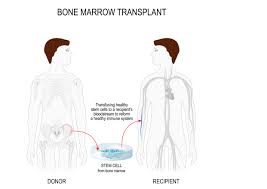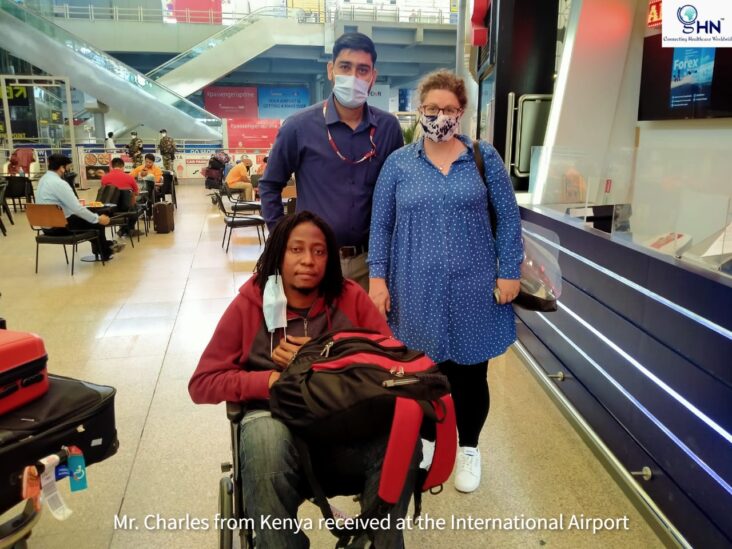Cost of Bone Marrow transplant for T Cell LYMPHOMA.
What is Lymphoma ?
Lymphoma is cancer that starts in the lymphocytes, a type of white blood cell of the human immune system. Lymphoma is the most common kind of blood cancer. It includes both Hodgkin’s lymphoma and non-Hodgkin’s lymphoma, depending on the specific type of lymphocyte involved.
T-cell lymphoma is type of Non-Hodgkin’s lymphoma which comes in many forms.
Types:
- T-lymphoblastic lymphoma/leukemia: This disease is very common in teens or young adults, with chances of males being affected more than females. It can be considered either a lymphoma or a type of acute lymphoblastic leukemia (ALL), depending on how much of the bone marrow is involved (leukemias have more bone marrow involvement).
It often starts in the thymus (a small organ behind the breastbone and in front of the heart, which is where many T cells are made), and may grow into a large tumor in the mediastinum (the area between the lungs). This may cause trouble in breathing and swelling of arms and face.
- Peripheral T-cell lymphomas: These are uncommon types of lymphoma that develop from more mature forms of T cells.
- Adult T-cell leukemia/lymphoma:This lymphoma is caused by infection with a virus called HTLV-1. It affects the bone marrow (where new blood cells are made), lymph nodes, spleen, liver, skin, and other organs.
- Cutaneous T-cell lymphomas : These lymphomas start in the skin. Skin lymphomas account for about 5% of all lymphomas.
- Angioimmunoblastic T-cell lymphoma: This lymphoma accounts for about 4% of all lymphomas. It is more common in old age. It involve lymph nodes and bone marrow as well as the spleen or liver, which can get enlarged. People with this lymphoma usually have fever, weight loss, skin rashes and often develop infections.
- Extranodal natural killer/T-cell lymphoma, nasal type: This rare type lymphoma involves the upper airway passages, mostly nose and upper throat, but it can also invade the skin, digestive tract, and other organs. Cells of this lymphoma are similar in some ways to natural killer (NK) cells, another type of lymphocyte.
- Enteropathy-associated intestinal T-cell lymphoma (EATL):EATL is a lymphoma that grows in the lining of the intestine. This lymphoma is common in the small intestine, but can also appear in the colon.
This lymphoma occurs in people with celiac disease (also called gluten-sensitive enteropathy). Celiac disease is an autoimmune disease in which eating gluten, causes the immune system to attack the lining of the intestine and other parts of the body. It is rare among people who have had celiac disease since childhood, and is more common in people diagnosed as older adults. This lymphoma is more common in men than women.
- Anaplastic large cell lymphoma (ALCL): About 2% of lymphomas are of this type. It is more common in young people (including children), but it can also affect older adults. This type of lymphoma tends to be fast-growing, but many people with this lymphoma can be cured.
There are different forms of Anaplastic large cell lymphoma
- Primary cutaneous ALCL only affects the skin. This is discussed in more detail in Lymphoma of the Skin.
- Systemic ALCLcan affect the lymph nodes and other organs, including the skin.
Systemic ALCL is divided into 2 types based on whether the lymphoma cells have a change in the ALK gene.
ALK-positive and ALK-negative type.
SYMPTOMS
Symptoms vary according to the specific type of T-cell lymphoma.
- symptoms of mycosis fungoides include: Patches of flat, scaly skin,thick raised plaques tumors that may or may not develop into ulcers and itching.
- Signs and symptoms of Sézary syndrome are: Red, itchy rashes covering most of the body and eyelids. Changes innails and hair,Enlarged lymph nodes edema, or swelling.
Not all forms of T-cell lymphoma cause symptoms on the skin. Other types may cause:
bleeding or bruising easily
recurrent infections
fevers or chills with no known cause
fatigue
persistent abdominal pain on the left side due to swollen spleen
abdominal fullness
frequent urination
constipation
TREATMENT
It is very likely to get more than one type of therapy, when people are looking for treatment, the major concern the cost of bone marrow transplant for Lymphoma.
Mycosis fungoides and Sézary syndrome may involve direct treatment on the skin as well as systemic treatment.
SKIN TREATMENTS
Certain ointments, creams, and gels applied directly to skin can control symptoms and even destroy cancer cells.
Retinoids (vitamin A-derived drugs). Potential side effects are itching, irritation, and sensitivity to sunlight. Retinoids shouldn’t be used during pregnancy.
Corticosteroids. Long-term use of topical corticosteroids can lead to thinning of skin.
Topical chemotherapy. It may include redness and swelling. It can also increase the risk of other types of cancer. However, topical chemotherapy tends to have fewer side effects than oral or intravenous chemotherapies.
SYSTEMATIC TREATMENTS
Medications for T-cell lymphomas include pills, injections, and those given intravenously. Targeted therapies and chemotherapy drugs are often combined for maximum healing.
Systemic treatments may include:
Chemotherapy combination called CHOP, which includes cyclophosphamide, vincristine, and prednisone
Newer chemo drugs, such as pralatrexate (Folotyn)
Targeted drugs, such as bortezomib (Velcade), belinostat (Beleodaq), or romidepsin (Istodax)
Immunotherapy drugs, such as alemtuzumab (Campath) and denileukin diftitox (Ontak)
In advanced cases, one may need maintenance chemotherapy for up to two years.
Light therapy
UVA and UVB light can kill cancer cells on the skin. Light therapy is usually given several times in a week using special lamps. UVA light treatment is generally combined with drugs called psoralens. UVA light activates the psoralens to kill cancer cells.
Radiation
Radiation therapy uses radioactive particles to destroy cancer cells. The beams can be directed to the affected skin so that internal organs aren’t affected.
Extracorporeal photopheresis
This is used to treat mycosis fungoides or Sézary syndrome. Two-day procedure, in which blood will be removed and treated with UV light and drugs that activate when exposed to the light, killing cancer cells.
Stem cell transplant
In stem cell transplant bone marrow is replaced with marrow from a healthy one and the cost of stem cell transplant in India varies from USD 14000 to USD 25000 depending on the individual’s health condition.
 India, some were talking to people who have been in India for treatment, others were talking to friends and everyone was trying to do their self best to come up with some sort of information about best bone marrow transplant Hospitals in India. In one of the family feeling organised on a saturday evening, a lady walked and she was a distant relative of Mr. Karanja, During the meeting, everyone was trying to contribute sharing views and ideas as to how they move ahead with the process. This old woman said she has been to India for the same treatment and she is doing perfectly well for the last 5 years post bone marrow transplant in India. It was a shock and surprise for everyone sitting in the hall. She said her family kept it confidential as they did not want others to know about her blood cancer. People in kenya take it as a death sentence when someone is diagnosed with any kind of cancer in the current times.
India, some were talking to people who have been in India for treatment, others were talking to friends and everyone was trying to do their self best to come up with some sort of information about best bone marrow transplant Hospitals in India. In one of the family feeling organised on a saturday evening, a lady walked and she was a distant relative of Mr. Karanja, During the meeting, everyone was trying to contribute sharing views and ideas as to how they move ahead with the process. This old woman said she has been to India for the same treatment and she is doing perfectly well for the last 5 years post bone marrow transplant in India. It was a shock and surprise for everyone sitting in the hall. She said her family kept it confidential as they did not want others to know about her blood cancer. People in kenya take it as a death sentence when someone is diagnosed with any kind of cancer in the current times.
